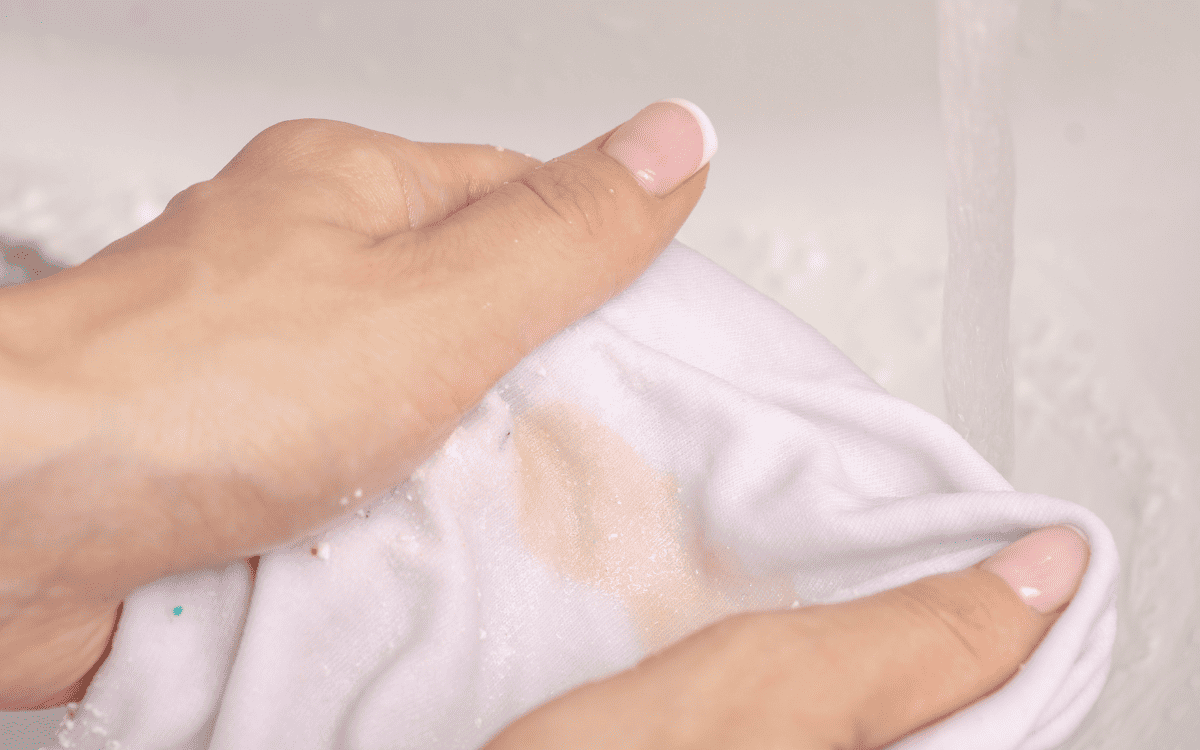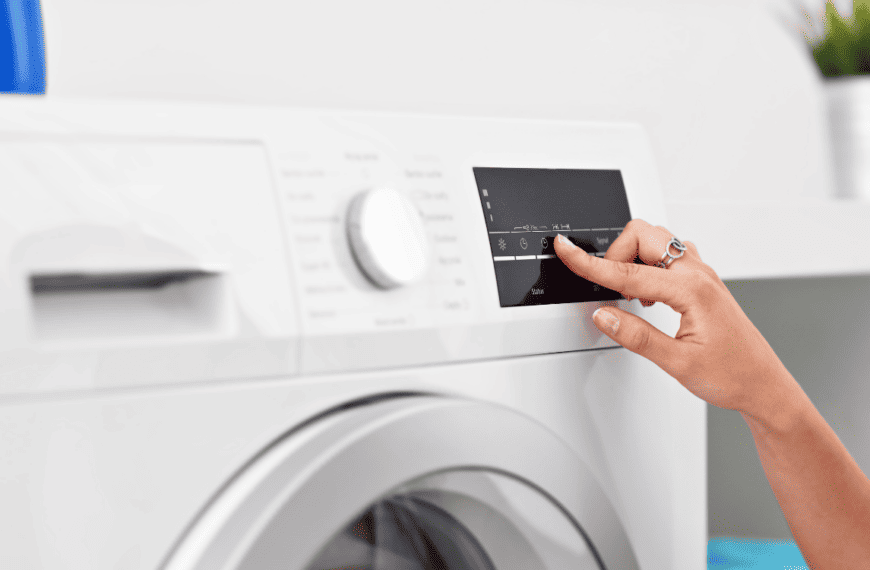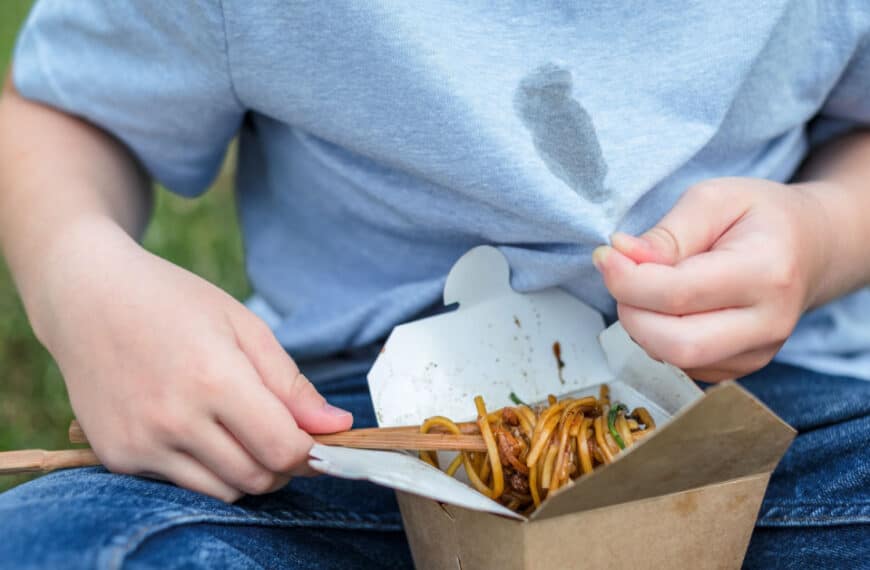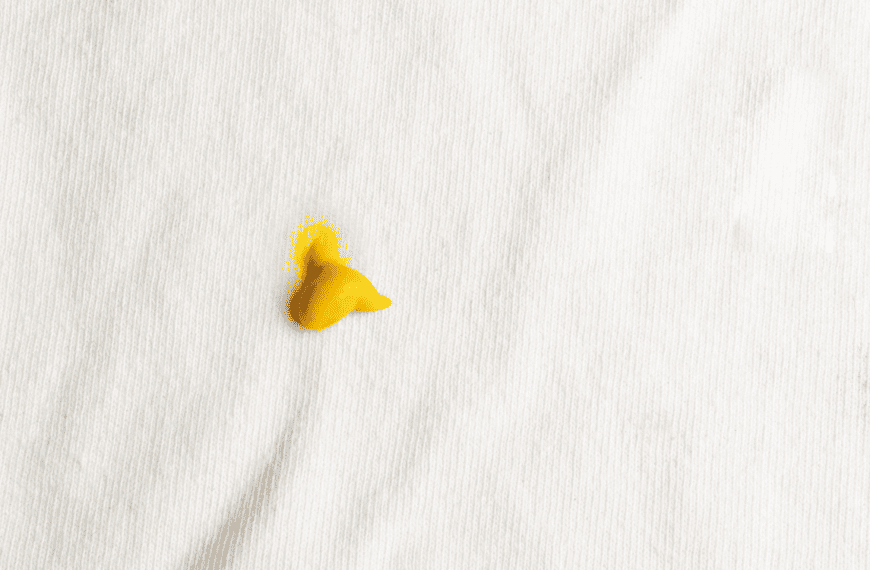If you’ve used white-out correction fluid to fix mistakes on your printouts, you know that it dries very quickly. Accidentally getting it on your clothes or upholstery will leave a noticeable mark you’ll want to get rid of as soon as possible.
Is white-out washable? Yes, it is, so long as you use the right methods. You’ll need something to break down the dried correction fluid, and I’ve found that alcohol typically does the trick. I’ll explain how to get white-out out of clothes.
Step-By-Step Cleaning Process for Removing White-Out Stains
Gather these basic supplies before you get started. How to remove correction fluid from your clothes is reasonably straightforward, but it takes a bit of patience and tenacity on your part.
- Cotton swabs
- Rubbing alcohol
- Small containers, such as a cup
- Stain remover
- Laundry detergent
- Soft cloth
Step 1: Soak a Cotton Swab With Rubbing Alcohol
Pour a small amount of alcohol into a cup, glass, or little bowl. Take a standard cotton swab and dip one end into the fluid.
Reseal your container of rubbing alcohol and keep it handy in case you need to use more. Also keep several cotton swabs on hand because, after one loosens the dissolved white-out correction fluid and picks up any dried flecks from the stain, you’ll replace it with a clean swab and keep going.
I specify using alcohol, but can acetone remove white-out stains? Yes, it can. Both fluids are solvents that break down white-out correction fluid effectively. The only thing is, that acetone can stain some materials, so in general, it’s safer to treat stains with an alcohol-based solvent.
Step 2: Dab the Stain and Wait One Minute
Gently dab the stained area with alcohol using a clean cotton swab. Don’t rub or apply excessive pressure. Gentle strokes will work better on your clothing. Check the results after a minute.
Your goal is to get the alcohol into the fabric so that it starts to dissolve the dried white-out. You can start from the edges of the correction fluid stain and work your way in.
Step 3: Dab Repeatedly To Dissolve the White-Out
Depending on how large the stain is, and how deeply the correcting fluid has soaked into the fabric, you’ll repeat Steps 1 and 2 multiple times to keep working away on the stain (or on several spots).
Use a clean cotton swab each time. If the alcohol you’ve poured into your cup or small bowl is starting to get dirty, dump it in a sink, rinse the container, and add a small amount of clean alcohol to use.
Step 4: Rinse Under Water or Wipe With Damp Cloth
Once you reach the point where most of the correction fluid stain has dissolved, rinse the material (if it’s washable) in lukewarm water, either under running water or in a sinkful of clean water.
Gently rub or brush the stain (don’t scrub) to see if any dried flecks remain. If so, repeat Steps 1-3 again as needed before redoing Step 4.
If your clothing can’t be immersed in water, then gently wipe the stain with a soft, non-abrasive damp cloth.
Step 5: Apply Stain Remover
At this point, the correction fluid stain may be completely gone, and you can wash and dry your clothing according to its recommended cleaning instructions.
But it’s very possible that some of the white-out stain is still present. In this case, pretreat it by soaking it with a laundry stain remover.
Step 6: Carefully Wash and Dry the Article of Clothing
This last step is key in your effort to remove correction fluid from your clothes. If you wash your stained article of clothing in water that’s too hot or too cold, you risk making what’s left of the stain permanent.
Wash your garment using an eco-friendly laundry detergent and warm water in the wash cycle. Before throwing your wet, washed garment in the dryer, check it. Is the white-out stain still there? If so, don’t dry it yet. Repeat the whole process one more time.
Is a White-Out Stain Permanent?
The stain doesn’t have to be permanent, but it can become permanent if the wrong steps are taken and either high heat or chemicals set the stain in for good.
Follow these tips on how to get white-out stains off clothing without creating a permanent mark:
- Use only the recommended chemicals to dissolve and remove white-out. The safest choice is alcohol. Acetone works on most materials but may stain some fabric mixes, resulting in discoloration
- A professional-strength laundry stain remover often works better than a milder solution for removing these stubborn stains
- Throughout the process, stick with warm water. Hot or cold water can negatively impact your correction fluid stain removal efforts. Plus hot water could shrink your fabric, something you’ll want to avoid
A Few Additional Useful Tips
- With delicate or unknown clothing fabrics, always test a small, non-visible area first when applying alcohol, acetone, or any other chemicals
- If your garment is dry-clean only, don’t attempt to wash it. You’re best off taking it to a professional dry cleaning service provider
- When drying your treated garment, try to air dry it if you’re worried that the dryer’s heat might set any remnant of a stain that isn’t completely removed
- Do not inhale correction fluid, as any solvent in the mixture can be harmful
Frequently Asked Questions (FAQ)
Can I Use These Methods on Leather or Suede?
You’re asking a vegan! But yes, you can remove white-out with alcohol and wipe the residue with a barely wet, clean cloth. Skip the laundry stain remover. This works on faux leather too.
Can I Use Nail Polish Remover Instead of Acetone?
If your nail polish remover contains acetone, it can be used to treat your white-out stain, but test it on a hidden area first. Some of the other ingredients in certain nail polish removers may create a stain.
What Should I Do if the Stain Doesn’t Come Out?
You can either repeat the correction fluid stain removal steps or have your item professionally cleaned to remove the stain.









